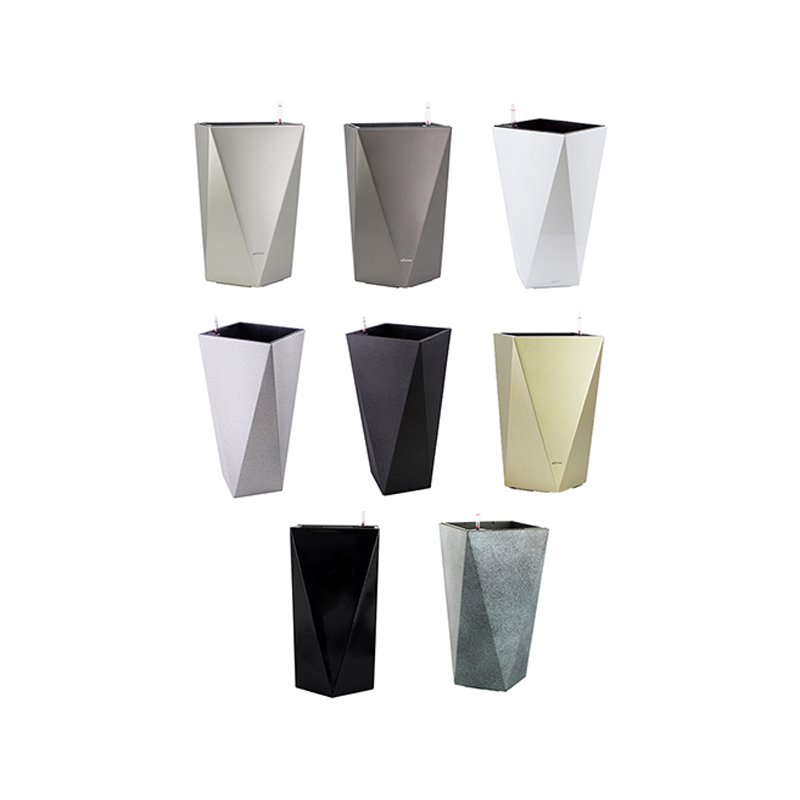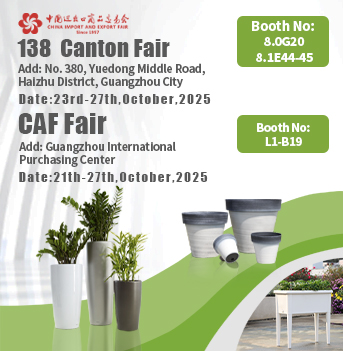Outdoor gardening offers a wonderful way to bring life and color to patios, balconies, and gardens. Choosing the right pots for outdoor plants is crucial because they face various weather conditions, including exposure to the sun’s ultraviolet (UV) rays. UV resistance is a key feature that helps outdoor pots maintain their durability and appearance over time. This article explores why UV resistance matters and how it impacts different types of pots, such as cute painted plant pots and large white outdoor planters, while also touching on how a fancy watering can can enhance your gardening experience.

When pots are placed outside, they are constantly exposed to sunlight. Over time, UV rays can cause materials to degrade, fade, or crack, especially in plastic or painted pots. This is where UV resistance comes into play. UV-resistant pots are designed to withstand the damaging effects of sunlight without losing strength or color vibrancy. For example, cute painted plant pots often feature bright colors and intricate designs that can easily fade if not properly treated against UV exposure. UV resistance helps these pots keep their charm and decorative appeal throughout the growing season and beyond.
Large white outdoor planters, which are popular for creating clean and elegant outdoor spaces, also benefit significantly from UV resistance. White surfaces are prone to showing dirt and discoloration, and constant sun exposure can cause yellowing or chalking if the material lacks UV protection. By choosing planters with built-in UV resistance, gardeners ensure that large white outdoor planters maintain their fresh, bright look even after months of sun exposure. This durability not only helps preserve the planter’s aesthetic but also protects the roots of plants by maintaining stable pot conditions.
It’s not just the pots themselves that benefit from considering UV effects; accessories used in outdoor gardening should also be chosen with sun exposure in mind. A fancy watering can, for instance, is often left outdoors between uses. If it lacks UV resistance, the material might become brittle or fade, reducing its lifespan and making it less enjoyable to use. Selecting a fancy watering can made from UV-resistant materials ensures it remains functional and visually appealing through many gardening seasons.
The materials used to make outdoor pots vary widely—plastic, ceramic, metal, and concrete are all common choices. Among these, plastic pots tend to be the more vulnerable to UV damage unless they are specifically formulated with UV inhibitors. UV-resistant plastic pots undergo special manufacturing processes where additives are mixed into the plastic to absorb and block harmful rays. This helps the pots avoid becoming brittle and extends their usable life. Cute painted plant pots made from UV-resistant plastic are particularly popular because they combine vibrant color and durability without adding much weight.
Ceramic pots naturally have some resistance to UV rays because of their baked, inorganic nature. However, the glazes and paints used on them can still fade if they are not UV-stabilized. For large white outdoor planters made from ceramic, this means the choice of glaze matters a great deal. UV-stable glazes help keep the white color bright and consistent, preventing it from dulling over time. This is important because these planters often serve as focal points in garden designs, and maintaining their clean look contributes to the overall atmosphere.
Metal and concrete planters also face UV challenges, though in different ways. Metal pots can heat up quickly in the sun, potentially stressing plants. Protective coatings with UV resistance help reduce heat buildup and prevent paint from peeling. Concrete planters can develop surface cracks if exposed to repeated cycles of sun and rain. UV-resistant sealants improve their longevity by shielding the surface from direct sunlight damage. Whether you choose cute painted plant pots or large white outdoor planters, understanding the materials’ interaction with UV rays helps in making an informed choice.
Aside from material considerations, UV resistance plays a role in environmental sustainability. Outdoor pots that degrade quickly under UV exposure often need to be replaced more frequently, generating more waste. Investing in UV-resistant pots means fewer replacements and less environmental impact over time. This aligns well with the growing trend of sustainable gardening practices, where longevity and small waste are priorities.
While selecting UV-resistant pots is a wise choice, it’s also important to care for them properly. Keeping cute painted plant pots clean and sheltered during bad weather helps maintain their look and durability. Likewise, large white outdoor planters benefit from occasional washing to prevent the buildup of dust or algae that can discolor their surfaces. A fancy watering can, when rinsed and stored properly, will last longer and continue to provide convenience and style to your gardening routine.
In conclusion, UV resistance is a vital factor to consider when choosing pots and accessories for outdoor gardening. It helps protect the integrity, color, and function of cute painted plant pots, large white outdoor planters, and even your fancy watering can. By selecting items designed with UV protection, gardeners can enjoy beautiful, durable containers that withstand sun exposure and keep plants thriving. This thoughtful approach to outdoor gardening ensures both the aesthetics and longevity of your garden elements remain satisfying season after season.

 English
English 日本語
日本語 Español
Español Deutsch
Deutsch عربى
عربى

